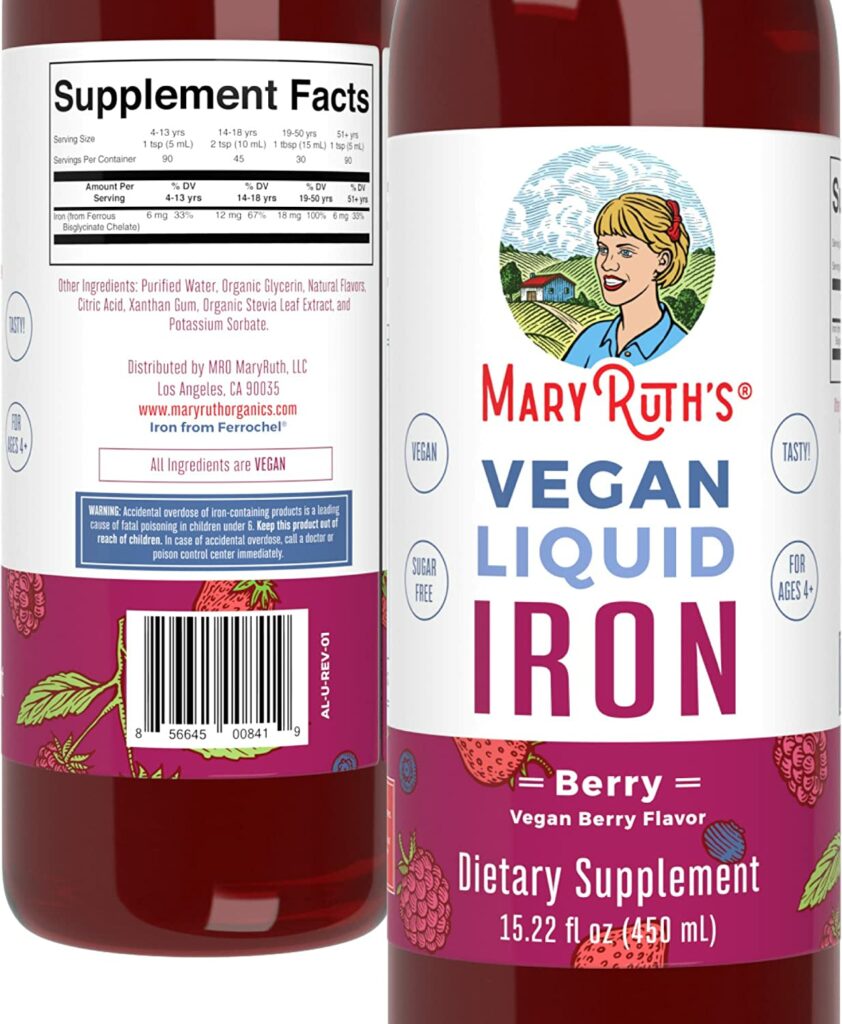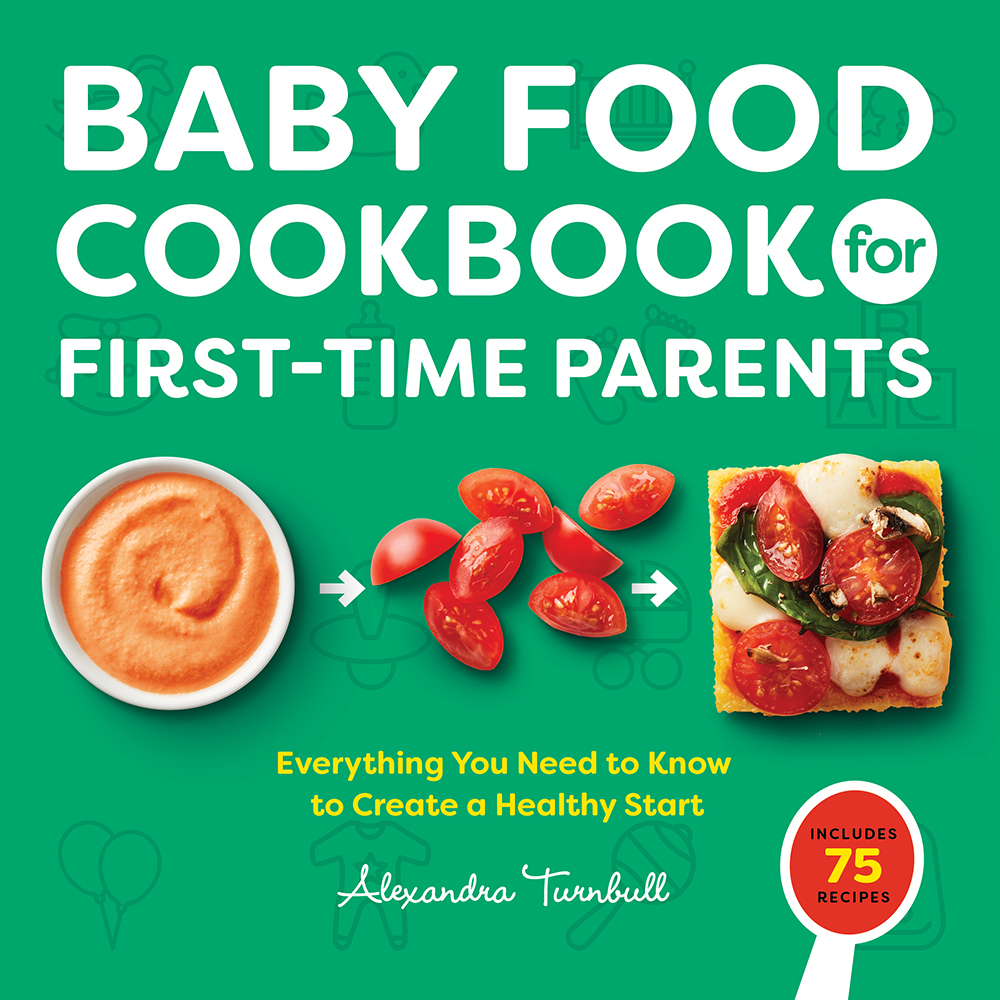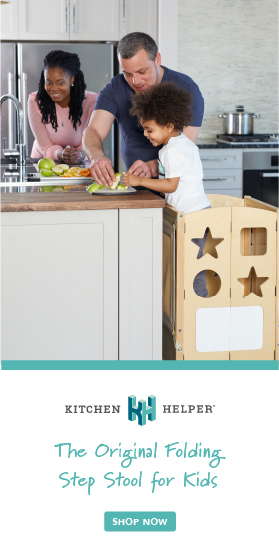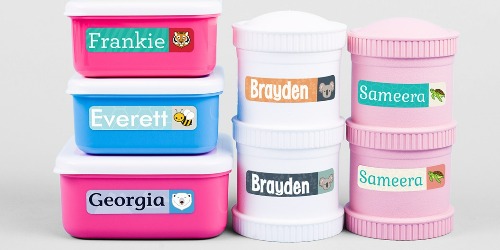
Are you offering iron-rich foods to your child? If not they could be at risk for iron deficiency in toddlers.
Maybe you’ve heard that iron-rich foods are essential when you were starting your baby on solids. But why is it so important to introduce iron-rich foods specifically and even into toddlerhood?
Iron is a mineral found in both plant and animal foods. This mineral is an important component of hemoglobin, which works to carry oxygen throughout our bodies. If we don’t get enough iron, our tissues and organs won’t be able to get enough oxygen.
Iron deficiency is when one’s body does not have enough iron. This topic is especially important to address because iron deficiency can affect your child’s growth, and may potentially lead to learning and behavioral concerns.
Infants and toddlers are at a higher risk for iron deficiency, and even more so if they are exclusively fed human milk, a toddler who is no longer drinking iron-fortified formula, or maybe they are a picky eater. If any of these describe your child, this post is for you!
Here you will learn how to recognize the signs and symptoms of iron deficiency in toddlers, iron recommendations, the different types of iron to be aware of, how to ensure your toddler is absorbing iron, and most importantly, a list of iron-rich foods!
Table of Contents
Signs and Symptoms of Iron Deficiency in toddlers
A hemoglobin blood test to screen for iron deficiency is something that is usually done when your toddler is 12 months of age. However, recognizing the signs and symptoms of iron deficiency in toddlers is just as important so you can detect and treat it early.
Signs and symptoms of iron deficiency in toddlers:
- Tired, fatigued, weakness
- Poor concentration or confusion
- Pale skin
- Rapid breathing or shortness of breath
- Poor appetite
- Sensitive to cold
- Poor growth and development
If you are noticing these signs and symptoms in your child, please speak with your pediatrician.
Iron Recommendations for Infants and Toddlers
Based on the Dietary Guidelines for Americans 2020-2025, it is recommended to introduce iron-rich foods to infants starting at around 6 months of age (which is around the time you are introducing any type of solid food anyway!).
Iron-rich foods are important components of an infant’s diet from 6 through 11 months to ensure adequate iron status, which supports the infant’s neurologic development and immune function.
Infants are typically born with body stores of iron adequate for about the first 6 months of life (depending on gestational age, maternal iron status, and timing of umbilical cord clamping). By age 6 months, however, infants require an external source of iron apart from human milk.
Although an infant’s iron stores should be enough for the first 6 months, you also need to consider if your baby is being fed human milk or iron-fortified formula. That is because the iron content in human milk is pretty low. Even if the lactating parent consumes more iron during lactation, it doesn’t increase the iron in breast milk!
For infants who are exclusively fed human milk:
Speak with your pediatrician about whether your baby needs an iron supplement before 6 months of age.
Once your baby reaches 6 months and is ready to start solids, offering iron-rich foods right from the beginning is particularly important for infants who are fed human milk, because again, the iron content is low in human milk.
In fact, about 77 percent of infants who are fed human milk in the United States have inadequate iron intake during the second half of infancy. This is why iron-rich foods are such a big deal when we first talk about introducing solids at 6 months!
Infants receiving most of their feeds with iron-fortified infant formula:
They are likely to need less iron from complementary foods when they start eating solids at 6 months since they are still getting iron from the formula – assuming that they are still continuing to drink formula through 1 year, but iron-rich foods should still be a priority.
After 12 months, they will have a lower iron requirement, but good food sources of iron are still recommended to maintain iron status and prevent iron deficiency in toddlers.
How much iron infants and children need
| Age | Iron needed per day |
| 7 – 12 months | 11 mg |
| 1 – 3 years | 7 mg |
| 4 – 8 years | 10 mg |
| 9 – 13 years | 8 mg |
Daily iron recommendations for older children and adults
| Age | Male | Female | Pregnancy | Lactation |
| 14 – 18 years | 11 mg | 15 mg | 27 mg | 10 mg |
| 19 – 50 years | 8 mg | 18 mg | 27 mg | 9 mg |
| 51 + years | 8 mg | 8 mg |
Heme vs Non-heme Iron
Did you know there are actually two types of iron? They are known as heme iron and non-heme iron. Incorporating both of these can help minimize the chance of iron deficiency in toddlers.
Heme iron is the iron that is found in animal-based foods, and it is better absorbed by the body. Some food sources of heme iron include:
- Beef
- Poultry
- Organ meats
- Tuna
Non-heme iron is the form of iron found in plant foods, which is actually not as easily absorbed compared to heme iron. Some food sources of non-heme iron include:
- Beans
- Lentils
- Spinach
- Tofu
- Fortified cereals
Ways to Increase Iron Absorption
So now we learned that non-heme iron is typically less absorbed in the body compared to heme iron. Luckily, there is a trick to help your body absorb more iron, especially if you prefer offering more plant-based iron-rich foods (non-heme iron).
Pair non-heme iron foods with vitamin C foods in the same meal!
Vitamin C helps our body absorb more iron. Here are some toddler-friendly ideas for pairing vitamin C with iron-rich foods:
- Scrambled eggs with tomato sauce (eggs for iron and tomato for vitamin C)
- Beans topped with fresh lemon or lime juice (beans for iron and lemon for vitamin C)
- Oatmeal with strawberries (oatmeal for iron and strawberries for vitamin C)
- Meatballs with tomato sauce (meat for iron and tomato for vitamin C)
- Bean burritos with salsa (beans for iron and salsa for vitamin C)
Now if you’re thinking, you’ve tried everything. You know what iron-rich foods are, you already offer plenty of vitamin C foods, but your toddler is still struggling with iron deficiency! This second tip may be commonly overlooked:
Limit your toddler’s milk and dairy intake.
This may sound crazy to you, because why would you need to limit your child’s milk intake if milk has been such a big part of your child’s diet?
Well, calcium inhibits iron absorption in the body, and milk and dairy are great sources of calcium! If your toddler loves dairy but is showing signs of iron deficiency, you may want to limit milk to 16 ounces or less per day. (24 ounces at most!).
Drinking more than 24 ounces throughout the day may also be a reason why your child isn’t eating much at meals because it’s filled them up!
You can also consider offering milk or dairy in between mealtimes, or just not at the same time when you are trying to get your toddler to eat some iron-rich foods. This way, you’re giving your child’s body the chance to absorb the iron first, before drinking the milk!
Cook with cast-iron
Did you know that you can increase the iron content in the foods you cook by 16% just by using cast-iron cookware? Research has shown that using cast-iron cookware may reduce iron deficiency anemia, especially in children who are more at risk.
This is a quick fix that can help give you and your children more iron from the foods you’re already eating. Don’t have any cast-iron cookware? Check out a few options in my Amazon shop.
Iron Rich Foods
Here are examples of iron-rich foods to help increase iron intake with the amounts of iron and portion sizes for toddlers:
| Food | Portion Size | Iron (mg) |
| Ground beef | 1 oz | 0.47 mg |
| Chicken | 1 oz | 0.37 mg |
| Turkey | 1 oz | 0.3 mg |
| Egg | ½ an egg | 0.3 mg |
| Shrimp | 1 oz | 0.13 mg |
| Oatmeal, cooked | ¼ cup | 0.54 mg |
| Spinach, boiled | 2 tablespoons | 0.81 mg |
| Kidney beans, boiled | 2 tablespoons | 0.4 mg |
| Tofu | 1 oz | 1.5 mg |
| Cheerios | 1/2 cup | 4.2 mg |
| Bread | 1 slice | 1 mg |
| Hummus | 1 tbsp | 0.4 mg |
| Enriched Pasta | 2 oz cooked | 0.6 mg |
| Banza Chickpea Pasta | 2 oz uncooked | 3 mg |
| Barilla Lentil Pasta | 2 oz uncooked | 3 mg |
| Broccoli | 1/4 cup | 0.25 mg |
| Spinach | 1/4 cup cooked | 3.2 mg |
| Lentils | 1/4 cup cooked | 1.5 mg |
| Tahini | 1 tbsp | 1.3 mg |
| Edamame | 1/4 cup | 0.8 mg |
Although many of the plant-based examples listed above may have more milligrams of iron, remember that they are non-heme sources of iron and aren’t as easily absorbed in the body. They’re still great to incorporate, but remember to pair them with vitamin C-rich foods.
Many grains such as cereal, bread, and pasta are fortified with important vitamins and minerals, iron being one of them. So if your toddler loves these foods, that’s great because they’re not only getting energy form the carbohydrates in these foods but iron as well.
Tips for Taking Iron Supplements
First, speak with your pediatrician before deciding if your toddler actually needs to take iron supplements. There are plenty of iron-rich foods that you can incorporate into mealtime!
If your toddler is iron deficient and needs to take iron supplements, you probably have had a hard time getting your child to take them. Let’s be honest, iron supplements don’t really taste the best!
One iron supplement that I’ve found to actually taste good, is Mary Ruth’s Vegan Liquid Iron Supplement.

Try giving iron supplements with your child’s preferred beverage or food, or something sweet to help mask the flavor. Think of foods that you can easily mix the iron into, like fruit purees, applesauce, or some 100% fruit juice.
Orange juice is a great option since it is high in vitamin C. Remember vitamin C helps with iron absorption? On the other hand, also note that you don’t want to be offering iron supplements with milk or dairy, as that will decrease the amount of iron that can be absorbed in the body!
To summarize…
Iron deficiency can be a huge concern for infants and toddlers, as not having enough iron affects their growth and development.
These are some of the things you should know when it comes to preventing iron deficiency in toddlers:
- Know the signs and symptoms of iron deficiency and discuss your concerns with your pediatrician.
- Your child’s iron needs can vary based on their age and whether they were fed human milk or iron-fortified formula.
- There are 2 types of iron – and our bodies absorb heme iron better than non-heme iron!
- To increase iron absorption, consider pairing vitamin C food with iron-rich food.
- You may need to limit the amount of milk and dairy your toddler is getting, as calcium inhibits iron absorption.
- Try giving iron supplements along with your child’s favorite foods or beverages!
Protein is also another nutrient that parents worry about. Learn more about it here:
Protein for Kids: Animal Protein, Plant Protein, and How Much?
If your toddler is ready to wean off of iron-fortified formula or breast milk, you may be interested in learning about Milk Alternatives for Toddlers: How to Select One!





